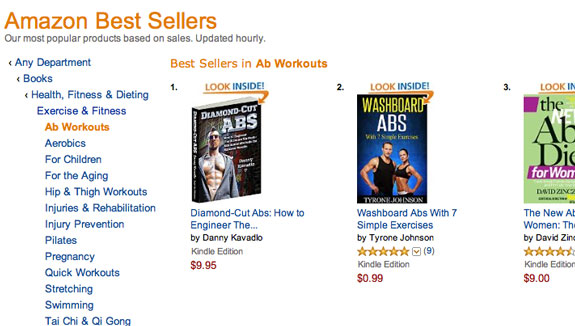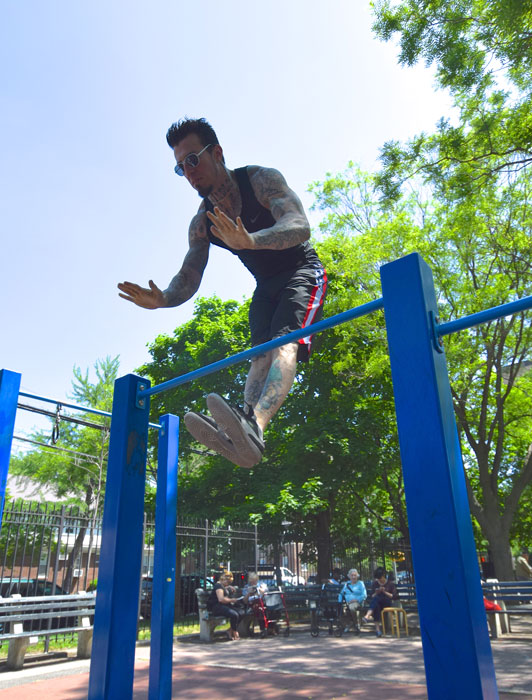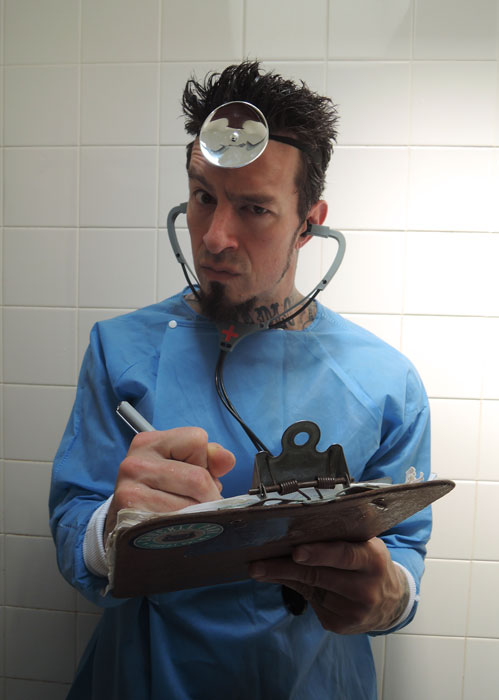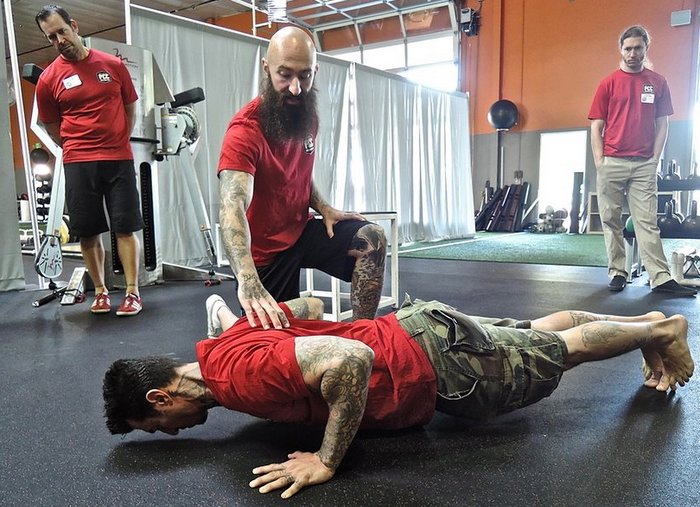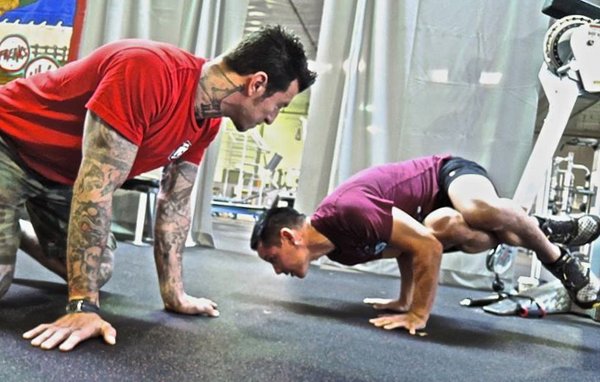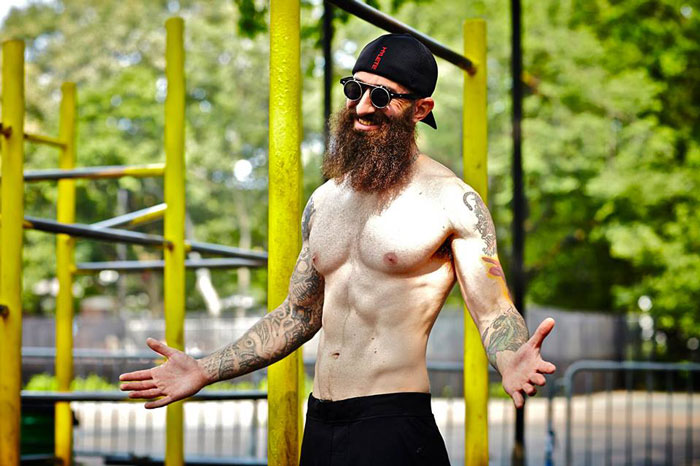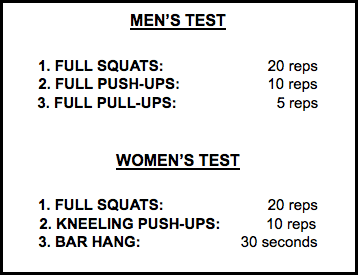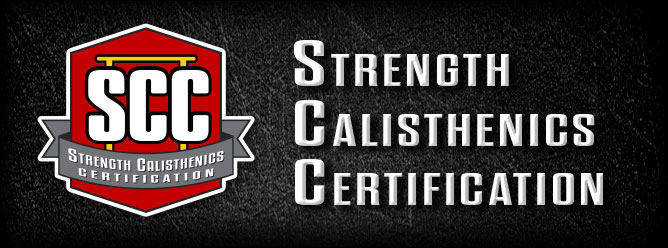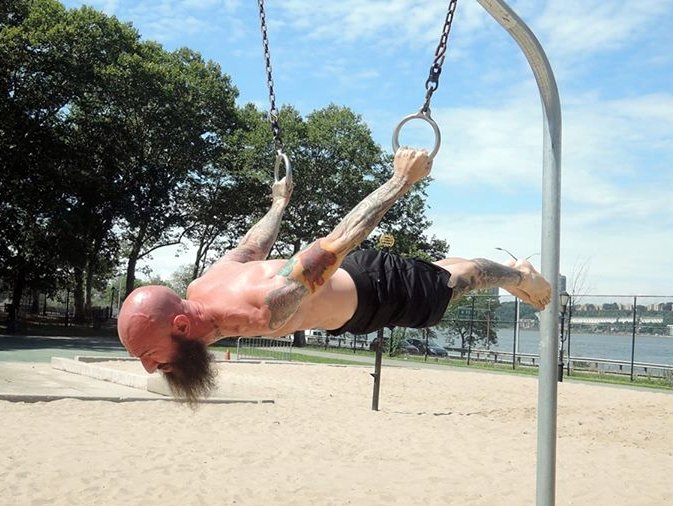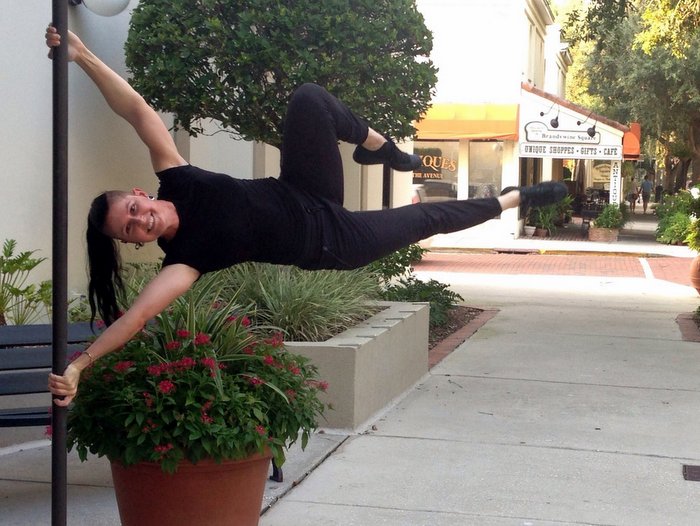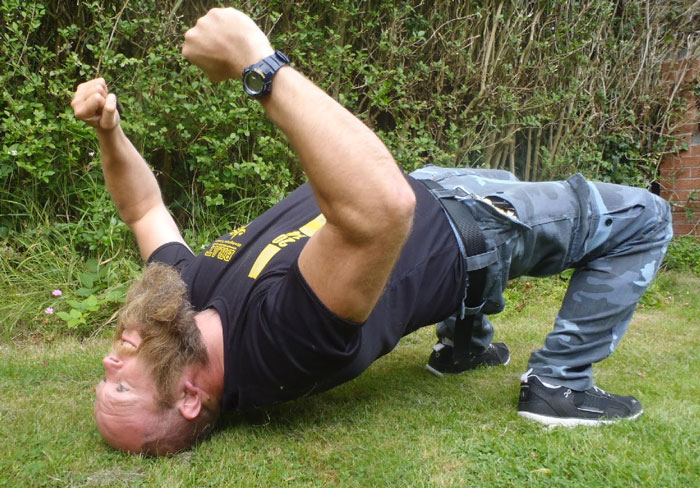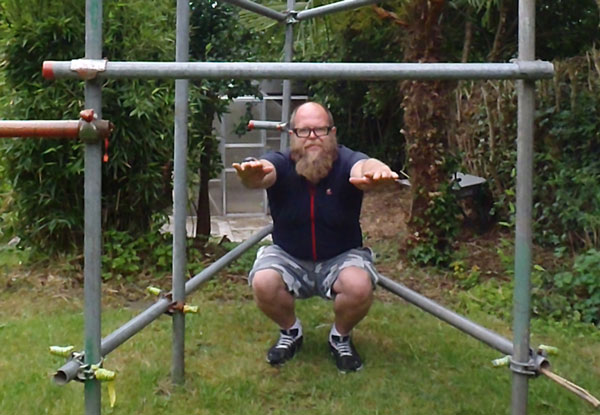
After reading an online article last week, I had a brief flashback from my early days of strength training—or what I thought was strength training. In the 80s, bodybuilding came into the popular consciousness (along with aerobics and some of the most regrettable workout wear ever) and took its seat as the basis for mainstream strength training. For decades, the general public (which included me in the late 1990s, early 2000s) didn’t know that we were trying to use the ideas of this physique-based sport-specific training to build strength and general health. Most of us thought that doing these moves would help us to get stronger, more in shape, and improve our health—and they did to a point. But like many others, I was often confused because my real-world strength had only mildly increased along with my improved body composition and heavier machine-based lifting.
Also unfortunately, being short meant that many of these “standard” machines just barely fit me. Come to think of it, I remember seeing people of all shapes and sizes fidgeting with the machines in vain attempts to make them “fit”. The other even more frustrating effect was that I felt clumsy, both in and outside the gym. I’d trip over my own feet and just generally felt disconnected… and didn’t know what to do about it. Maybe I just wasn’t a coordinated person?
Fortunately, I eventually learned that I just needed to change the way I was training. And soon after, I noticed my pull-up numbers began to increase as I learned to use my whole body for the lift, not just my arms and upper body as I’d learned to with the bodybuilding approach. And while it was still good that I could even do pull-ups that way, I’d been stuck on the same 3-4 satisfactory reps for a very long time.
When Convict Conditioning was first published, I balked at the early steps, thinking I was somehow magically beyond them. I couldn’t have been more wrong! I needed to start from the beginning and fill in the missing pieces of my training. It was necessary to “get over myself” to realize the extreme value of those beginning steps—especially when building the strength foundation necessary for advanced moves down the line. There are no “hacks” or “shortcuts” that can take the place of a solid foundation.
With all of that being said, it is still difficult for people to know how and where to start with bodyweight training, even if they are experienced with weight training or even if they’ve been training with kettlebells. In Convict Conditioning as well as Al Kavadlo and Danny Kavadlo’s books there are suggested workouts, examples, and instructions on how to customize your own programs. Yet somehow many of us still struggle to know where to start, or how to program a lot of this almost too-simple-to-be-true training for our clients or groups.
In Convict, we’re told to simply work through the progressions, only moving ahead when the reps are comfortably met… not barely met. Over time, we learn not to cheat ourselves when rushing through the progressions. It’s the beginner’s mind concept… and it works! But how do we teach it to others in the context of a session?
The other so-called “problem” with bodyweight training often comes from the lack of restrictions and the fact that it really can be done anywhere. With so few “rules” it can be easy to feel lost instead of liberated at first. This is one of the many reasons I’m thrilled with the new one-day Strength Calisthenics Certification workshops. They teach precisely what you need from the beginning… and more importantly, how to teach it to others. At the first ever SCC in New York, even experienced trainers and exercise enthusiasts found themselves “filling in the gaps” of their training with these powerful basics and the philosophy behind them. We never really outgrow the “classics”.

Many of us (and our clients) may first come to basic bodyweight exercises with some baggage and the feeling that we “already know what we’re doing.” We often find that our ideas might actually be stuck back in high school PE class, or from following along with an old exercise video! What a client may remember from PE might be fuzzy at best, and you may find out that they have a bad attitude towards the exercises because sub-standard form has been causing pain! As a trainer (even if you’re training yourself), you need to understand and communicate the value of starting back at the beginning.
The SCC has all the basic building blocks for your own training, and for training others. The 400+ page manual also includes a programming guide for all levels and for multiple goals (including of all things, bodybuilding!) The SCC guide will help you get the coordination-boosting, real-world-strength-boosting, foundation–building benefits for yourself and your client/students. While your creativity will still need to be applied, these ideas will help you create workouts with skill building and movement pattern improvement—along with strength and conditioning.
Below is an example of a workout heavily inspired by the SCC materials and which could be adapted for a variety of beginner-to-intermediate situations.
Start with a warm up. At the PCC and SCC, we teach to warm up with the earlier, and often earliest progressions for the various movements we’ll be training in a given session, I also like to apply this to the Trifecta movements from Convict Conditioning Vol2 (when you go to the SCC, you’ll notice that the bridge and midsection hold moves also appear in the SCC manual), and scale it in much the same way. Some people have been confused with the Trifecta and have tried to jump right in with the later steps, even if they have not yet worked up to them in their regular sessions. Short bridges, beginner seated twists and bent-leg raised holds are great “warm-up” versions of the bridge, twist, and l-sit specified in Paul Wade’s Trifecta… even if you’re advanced or working with advanced students, revisiting those early steps for the first few reps is a great warm-up and “check in” with the body on a given day. Remember, these are active movements requiring active tension for full benefits. The other function of this focused warm up is to get our minds ready to work. Even a loosely structured warm-up can focus our attention on the task at hand, while breaking us away from our minds chattering away about the experiences of the day. In my own training, I think I do warm-ups as much for my mind as for my body!
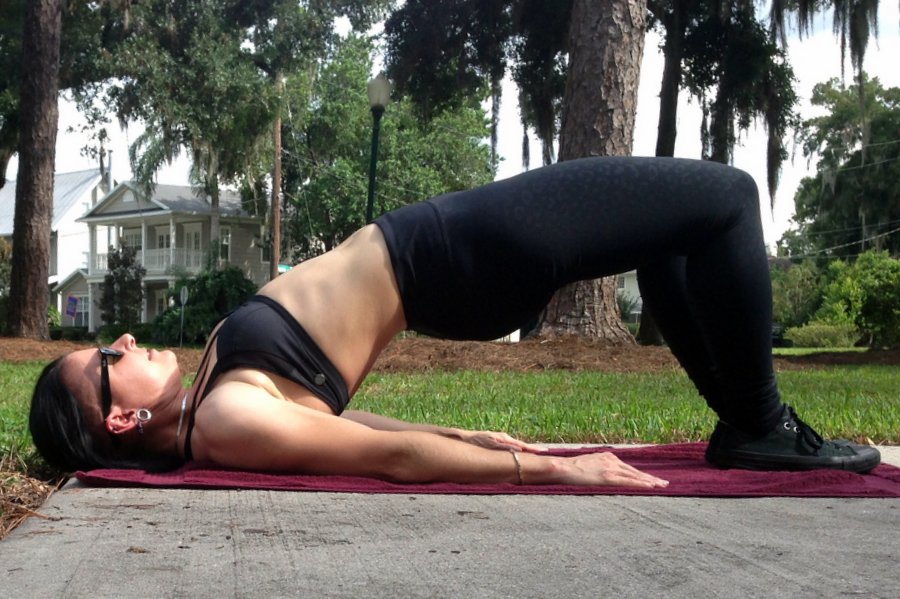
Trifecta “Warm-Up” Example:
- Short bridge and 5-second holds for three reps
- Raised or knuckle-based N-hold (5-10 second holds) for three reps
- Straight leg hold or easy twist hold (5-10 second holds) for three reps
Repeat (with the same versions of the exercises, or if you have progressed in your training, you have the option to move up a step or two)*
The SCC-Inspired “Beginner” workout example below uses a blend of the approaches given in the programming guide, but the core of the ideas below were from the section for deconditioned exercisers. The original form of this workout was designed for a deconditioned client with a fair amount of retained strength. I’ve adapted it for a more general purpose, but please tailor it to your own situations.
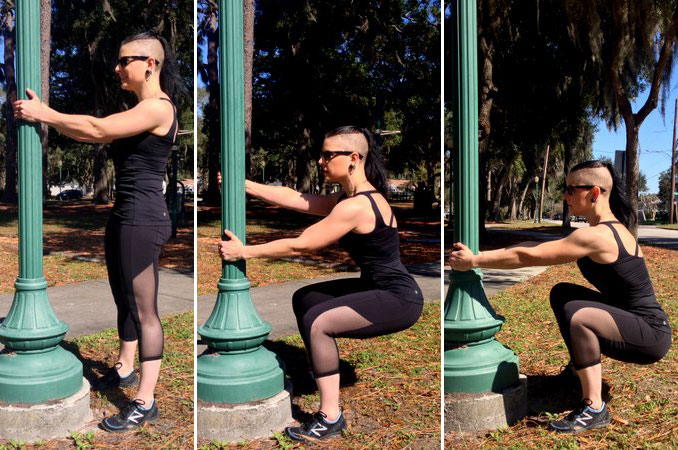
Review the movement patterns of each exercise for a few reps before starting, this will allow you to take extra time to make any changes before starting the real work sets. You’ll soon know whether there will be an opportunity to move forward in this session or the need to revisit an earlier step. For this workout, we did just a few reps of the assisted squat (with vertical pole or partner), horizontal pulls (Aussie pull-ups, bodyweight rows), incline (hands raised) push-ups, leg raises from the floor. While this can be progressed to any more advanced level, the original intention of this 3x week workout was to build up a reasonably deconditioned person—it can also be a nice way to come back to working out after illness.
Here are the work sets (do two rounds):
- Self-assisted squats, 10 reps
- Aussie pull-ups, 10 reps
- Incline push-ups, 10 reps
- Leg raises from the floor, 10 reps
Following this section, some may wish to follow up with some basic conditioning exercises such as jumping rope for time, or a brisk walk home from the park.
Finally, I find that “cooling down” with the version of the Trifecta I described above can be not only a useful way to end the workout, but a way to assess how you feel about the work sets, and to note any improvements as well. It’s subtle, but this “cool down” can really be a big motivator to stay the course!
This is just one example adapted from the SCC programming section, and while most people who train others will agree that most of our clients will be deconditioned, general population people, the SCC programming can also ramp up to spectacular levels of difficulty and challenge.
I hope to see you at a future SCC or PCC workshop!
*Trifecta progression examples for the second round: wrestler’s bridge or full bridges, L-sit from the floor, full twist hold… but remember there’s no reason to rush forward.
****
Adrienne Harvey, Senior PCC Instructor, RKC-II, CK-FMS, has been RKC Certified since 2010, and RKC Level 2 certified since 2011. Kettlebell and bodyweight training have been crucial in Adrienne’s personal quest for fitness. A core member of the PCC team, Adrienne loves sharing her knowledge with small groups and individuals. She also loves to develop recipes and workout programs to further support performance, body composition, and of course—FUN. Go to http://www.giryagirl.com for more information about Adrienne.
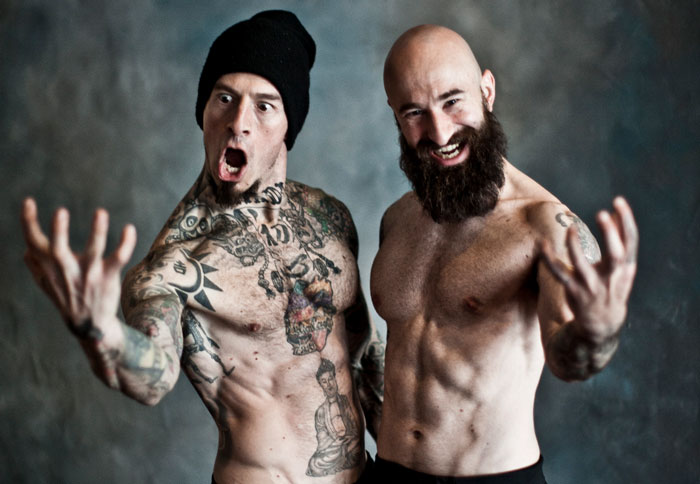

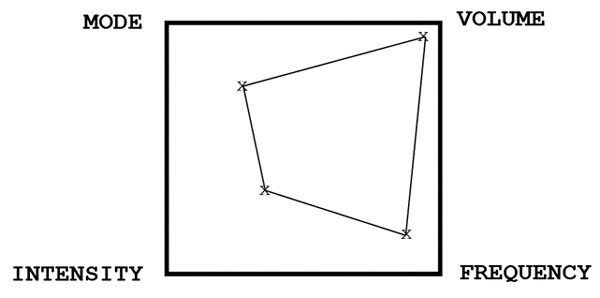
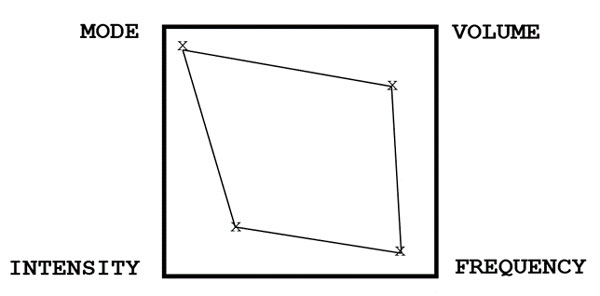

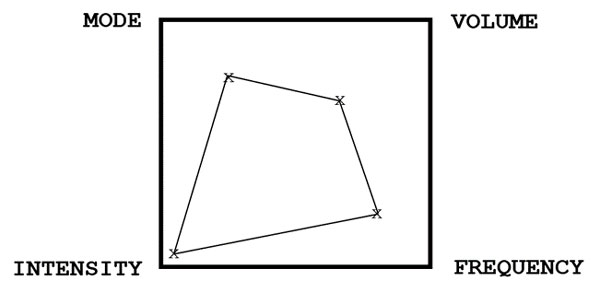
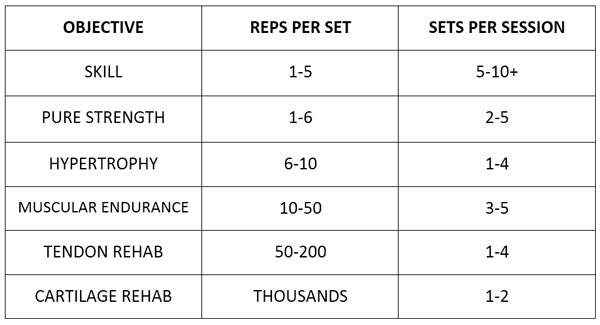
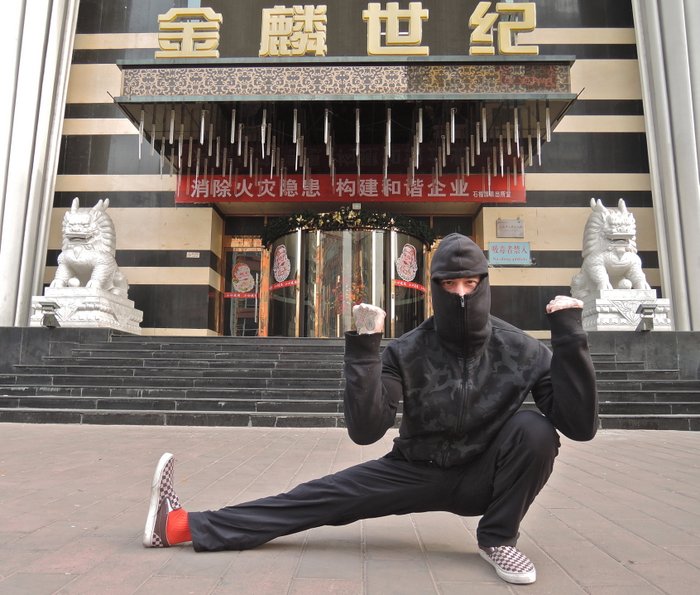
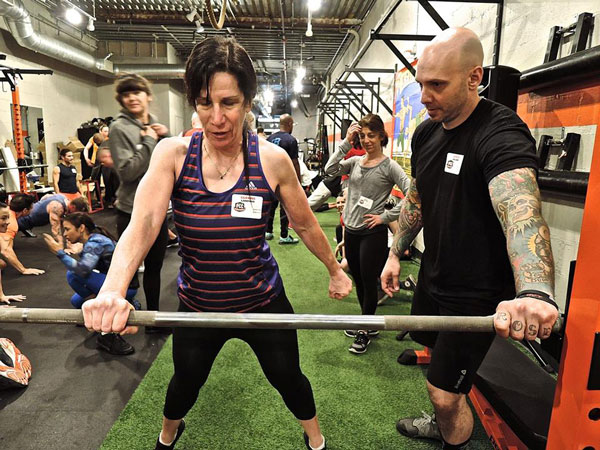
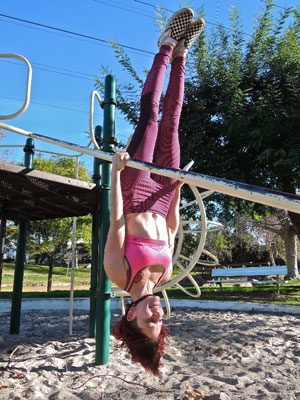

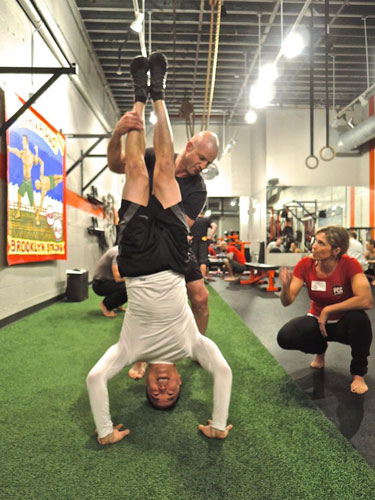
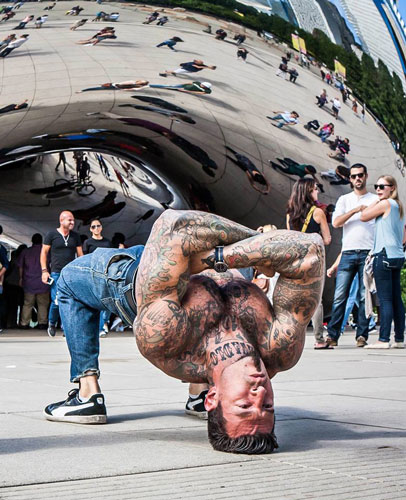

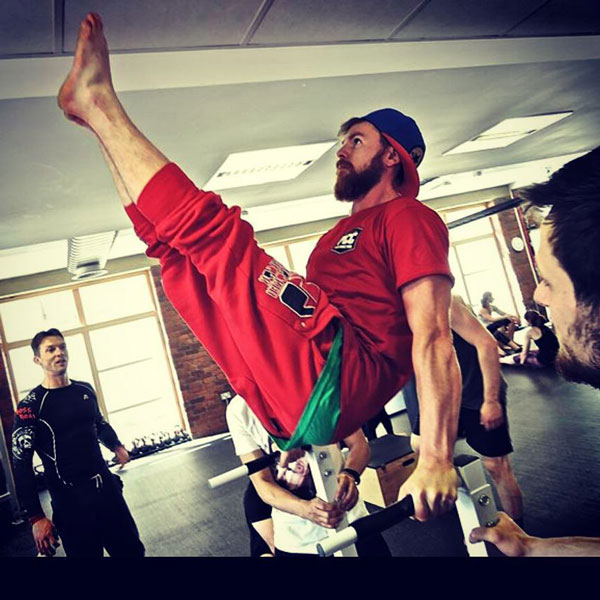
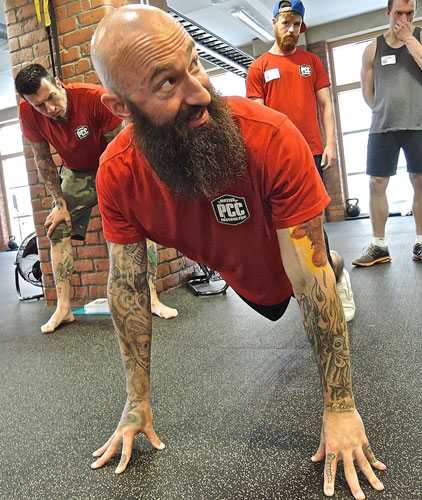
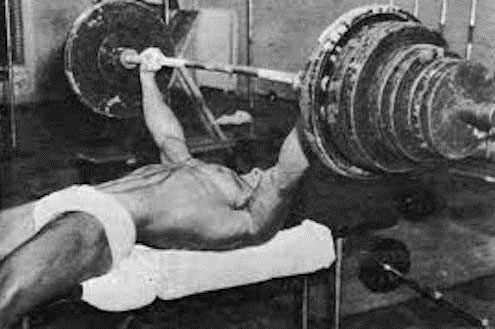
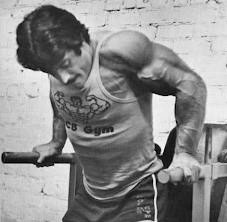 The king of High Intensity Training was Mike Mentzer. He shocked the training world with his one-set-to-failure philosophy, and he practiced what he preached. It was hard to argue with those results, either: back in ‘78 he was the first ever bodybuilder to win the Mr Universe with a perfect score. Many in the know also thought he was the winner of the highly controversial 1980 Mr Olympia, which was actually taken by a well out-of-shape Arnold S., who entered as a last minute contestant.
The king of High Intensity Training was Mike Mentzer. He shocked the training world with his one-set-to-failure philosophy, and he practiced what he preached. It was hard to argue with those results, either: back in ‘78 he was the first ever bodybuilder to win the Mr Universe with a perfect score. Many in the know also thought he was the winner of the highly controversial 1980 Mr Olympia, which was actually taken by a well out-of-shape Arnold S., who entered as a last minute contestant.
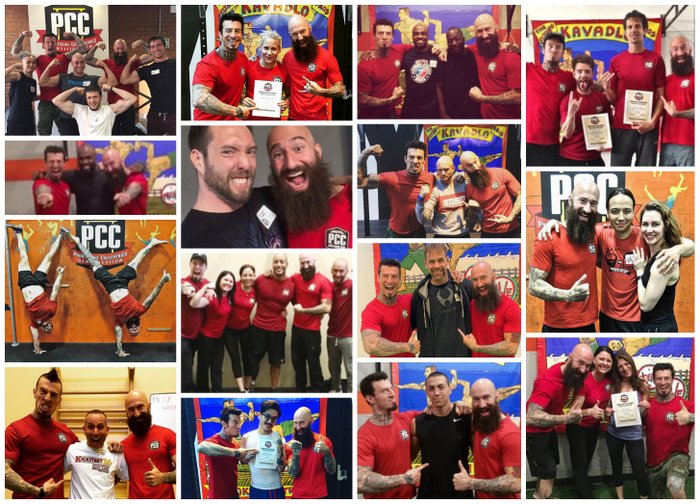 What a great year it has been for calisthenics and the PCC! Danny and I traveled all over the US and Europe in 2015, bringing the Progressive Calisthenics Certification to new places like
What a great year it has been for calisthenics and the PCC! Danny and I traveled all over the US and Europe in 2015, bringing the Progressive Calisthenics Certification to new places like 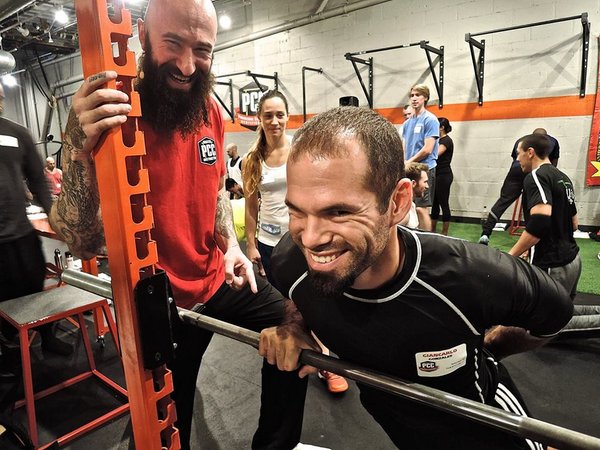 –It’s always an honor to get a blog post from a calisthenics legend like PCC Instructor
–It’s always an honor to get a blog post from a calisthenics legend like PCC Instructor 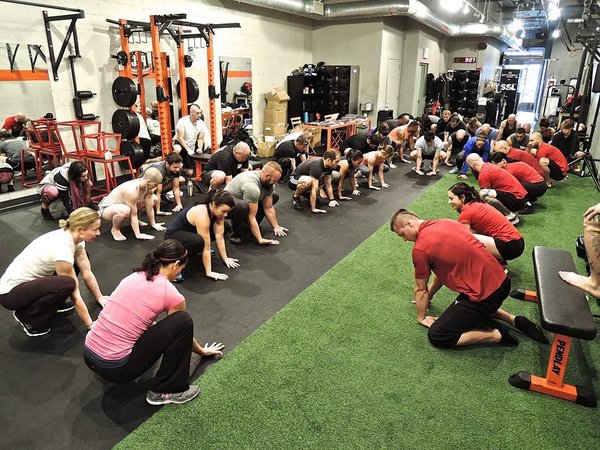 –My wife and fellow PCC Instructor Grace Kavadlo penned this helpful
–My wife and fellow PCC Instructor Grace Kavadlo penned this helpful 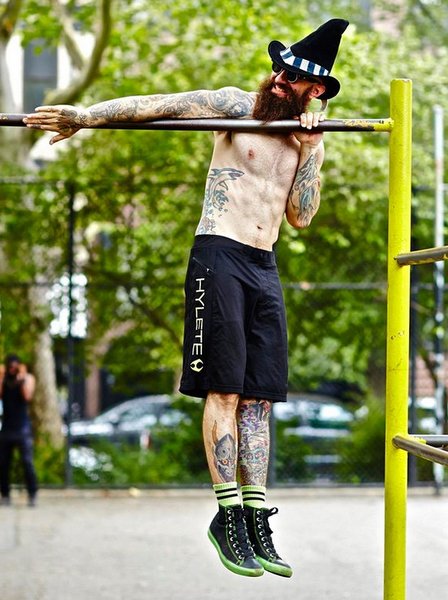
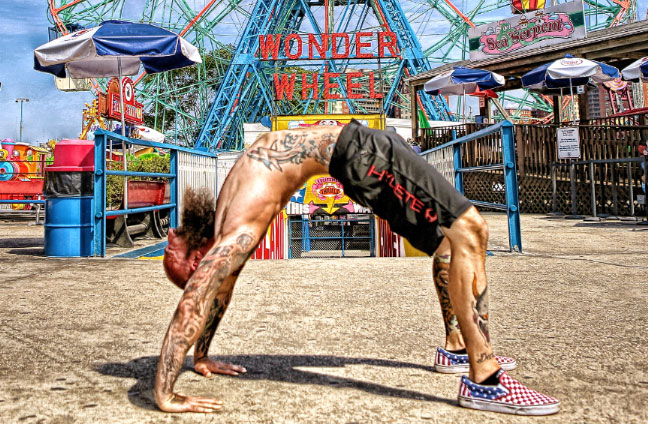
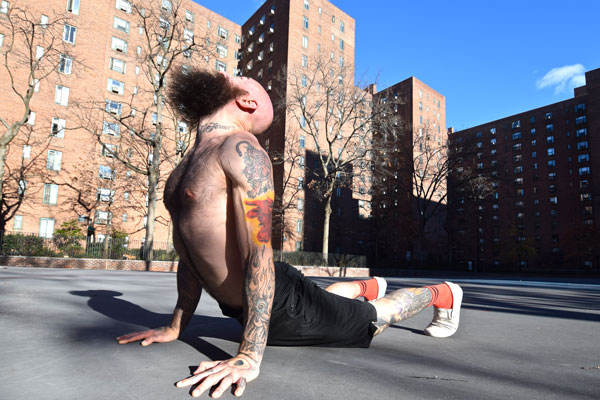

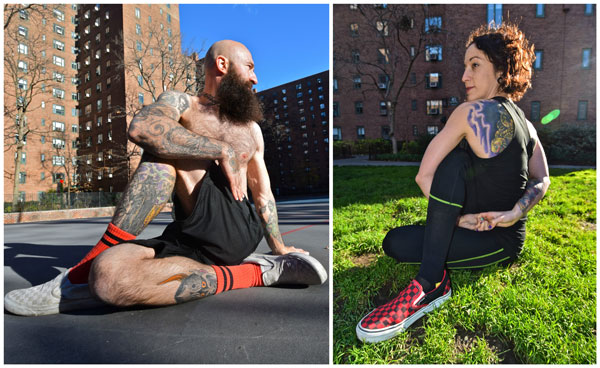
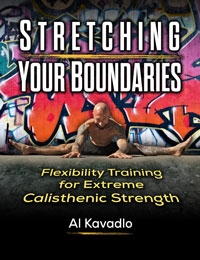
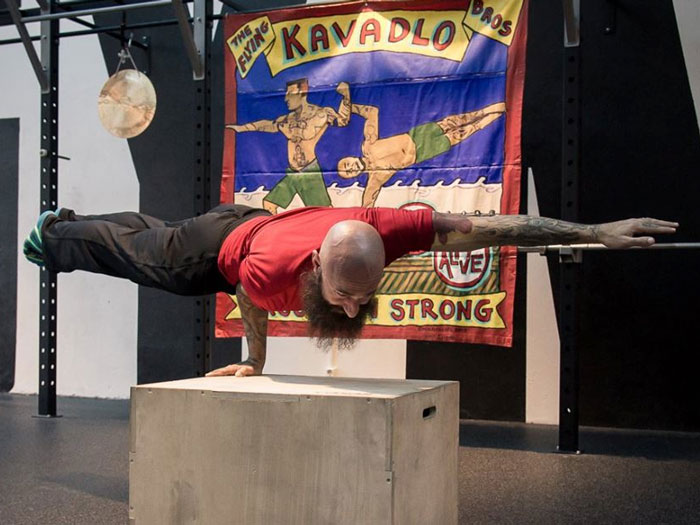 If you look around most mainstream gyms, you’re likely to see people using fancy-looking machines to try hitting each part of their bodies individually. This “isolation principle” of weight training gained popularity with the rise of bodybuilding, where it is effective in sculpting individual muscles in isolation and hoping to counterbalance that effort with each muscle individually, putting them together in a “Frankenstein” fashion to build a muscular physique.
If you look around most mainstream gyms, you’re likely to see people using fancy-looking machines to try hitting each part of their bodies individually. This “isolation principle” of weight training gained popularity with the rise of bodybuilding, where it is effective in sculpting individual muscles in isolation and hoping to counterbalance that effort with each muscle individually, putting them together in a “Frankenstein” fashion to build a muscular physique.

 Joseph A. Schwartz, DC has 31 years experience as a practicing chiropractor with an emphasis on neurology, rehabilitation, nutrition, strength and conditioning. His mission is to empower others so they may exceed their expectations for vibrant health and well-being.
Joseph A. Schwartz, DC has 31 years experience as a practicing chiropractor with an emphasis on neurology, rehabilitation, nutrition, strength and conditioning. His mission is to empower others so they may exceed their expectations for vibrant health and well-being.
